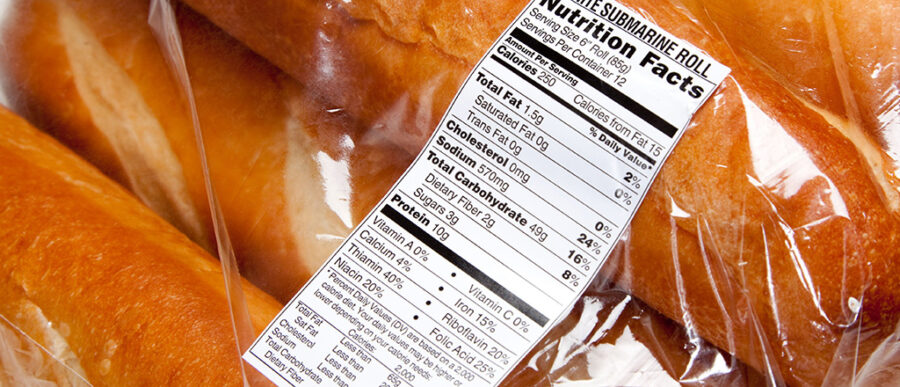As presidential legacies go, First Lady Michelle Obama’s announcement last month of a move towards a “modernized nutrition facts label” on food products could leave a lasting impact that few other measures can match. Focusing on calories, serving sizes and sugars, it strikes a chord with a battle of the bulge that Americans have struggled with for decades — obesity, and the other complications it can bring, such as Type 2 diabetes. Nearly 800,000 products carry the label, but it has not been “significantly updated” since it was released 20 years ago, according to the White House.
The benefits of such extra information on food labels are not, however, guaranteed. For one, the increased visibility of warnings about the adverse effects of unhealthy food hasn’t stopped Americans from binging on junk food. Concerns over calories, sodium and sugars have led to food makers including less of them in their products, but the evidence is thin on the gains from those actions. In order for the new labels to spur Americans to eat healthier foods, the challenge is in effective communication, according to experts at Wharton and the University of Pennsylvania.
The proposed changes in labeling of processed packaged foods are in three areas: the emphasis to make it easier to identify calories; to use a metric for servings that is more realistic, and to include information on added sugars. “Information on Vitamin D and potassium — nutrients Americans often do not get enough of — will [also] be required,” the White House said.
According to Karen Glanz, professor at the University of Pennsylvania’s Perelman School of Medicine, food labeling has been updated and revised several times over the past two decades, “but not with this particular emphasis.” She added that “these are things that have been called for, for probably decades.” Glanz is also director of the University of Pennsylvania Prevention Research Center.
Wharton marketing lecturer Jason Riis noted that almost everybody has heard about the high sugar content in cans of soda, for example. “[Yet] it’s very easy to bury that fact in the back of your mind and go on letting your kids have a Coke or two a day,” he said. However, the new labeling with the increased emphasis on the amounts of added sugar “will be a constant reminder” to consumers of the accompanying health risks, he added. “When you consume all this added sugar, you are probably not consuming other foods that are more nutritious and filling,” he noted.
Glanz and Riis discussed the potential gains from the upgraded food labels on the Knowledge at Wharton show on Wharton Business Radio on SiriusXM channel 111. (Listen to the podcast at the top of this page.)
A Shift in Focus
Glanz said the food industry has always worked on reformulating products with “chemists working overtime and always trying to get their foods to taste better and be more appealing to get that little edge [and] make people want to eat more.” The new labeling requirements could convince companies to shift their priorities. “In this case, if they have to fit in and to not look so bad on a nutrition facts label, then that could be a good thing for the public,” she added.
Reformulating products is long-term project for the food industry, and has to involve functions like marketing, said Riis. “It is not just adding less sugar,” he said. “It is making sure you are creating a product that is stable on the shelf, that people would still love the taste of, and buy to the same degree that they were buying before.” Given those challenges, the food industry “has a right to push back” and say that the changes are big projects that would take much time and effort, he added.
Not surprisingly, short cuts are available for food makers. “There there are easier ways to jump on the health bandwagon, with terms like ‘natural,’ ‘organic’ and ‘healthy,’” said Riis. For example, many have tried to position sugar as ‘natural’ and while that is true to some extent, “natural and organic [products] do not necessarily predict better health,” he added.
“There is this fear of a stigma that if you do something to make the food healthier, people are going to think you are making it less tasty.” –Karen Glanz
Making foods healthier could create some unwelcome outcomes for companies. “There is this fear of a stigma that if you do something to make the food healthier, people are going to think you are making it less tasty,” said Glanz. In fact, many companies including Kraft Foods have reduced the amount of sodium in their foods “stealthily,” as the term goes in the industry, said Riis. “Research shows that much of consumers’ intuition about what tastes good goes in the direction of more salt and more sugar,” he added. “That is why in many cases the industry doesn’t broadcast some of the changes it makes to food formulations.”
Responding to Health Concerns
A shift in emphasis on the nutrition information provided could have major consequences. Glanz recalled that some 15-20 years ago, the emphasis was on providing information on the content in food products. That has now been replaced by an emphasis on sugar content, she said. “A lot of people blame all the ballyhoo about lower-fat foods for the increase in sugar in our processed foods,” she added.
Clearly, public concerns have grown in recent years over unhealthy amounts of sugar and calories in processed foods. However, what is not clear is how exactly consumers will interact with extra information in food labels. Glanz does not see strong evidence of the benefits from increased disclosure in food labels. While the public discussion on obesity in the U.S. began 10-15 years ago, “only tiny bits of progress have been achieved in reducing the increase in obesity in certain cities,” she said, citing available data. “That is over a short period of time and may be a little blip — we don’t know — so we haven’t done very well.”
According to Riis, some early studies showed that the effect of displaying calorie counts on restaurant menus was minimal. But the information could create benefits in other ways, he said. He referred to research by Glanz on how some disclosure requirements may lead food makers to reformulate their products. Another way the information could benefit consumers’ health is if chefs and others in the food service industry take seriously concerns about calories and sugar as they go about their preparations, he said.
According to Glanz, much of the health concerns regarding Americans’ eating habits seem to be related to portion sizes and total energy or calorie intake. “So if these labels can nudge things in that direction and/or nudge the industry to reformulate the foods that will be less high-calorie, then that could move things without necessarily depending on people’s conscious decision-making,” she said.
Spreading Goodness
Riis said that the increased transparency in food labels could prompt other positive actions from the food industry. For example, manufacturers of food products may want to lower calorie and sugar amounts in their existing products or launch new, low-calorie products. It could also convince food makers to disclose more in front-of-package labels, he added. He noted that some companies, especially those in the beverage industry, have voluntarily stepped up their disclosures in front-of-pack labels.
The stated purpose of the nutrition fact labels has been to enable people to make informed decisions about the foods they purchase and eat, Glanz noted. “That all hinges on whether people actually read it and understand it, and whether it is easy to see and digest,” she said. Displaying the nutrition information on the front of packs ensures that “consumers don’t have to turn the pack around to see that, or bring out their reading glasses,” she added.
“It is hard to get us to eat smaller portions with lower calories and smaller amounts of sugar.” –Jason Riis
But Glanz was skeptical about some food companies including more calorie information in their front-of-pack labels. “That is more for marketing purposes than for informational purposes,” she said. “They would say things like ‘No Trans Fats’ for a food that never had trans fats in it to begin with, making it seem like it was a healthy thing.” She noted that the U.S. Food and Drug Administration, the industry’s regulator, has blocked such attempts.
Bigger Challenges
Changing food labels is tinkering around the edges of a bigger problem. The real challenge is in changing food habits that have formed over long periods of time, said Riis. “It is hard to get us to eat smaller portions with lower calories and smaller amounts of sugar,” he said. “The labels aren’t revealing anything dramatic. Most people already know that to lower their weight they have to consume fewer calories.”
Scientists, too, do not agree on what is the most impactful information to put on food labels, such as the right portion sizes, said Glanz. Consumers can still get confused, she added. For example, if the portion size on a bag of potato chips lists 10 chips instead of five, some people would take that as a recommendation to eat more, she noted. “They are still not fully dummy-proof.”
Riis saw that as a communications challenge for food makers. “While we are clear about the ideal portion sizes, how do you place the right amount of emphasis on a certain portion size to change behavior?” he asked.
Schools have been among the most active in the drive towards healthier foods, said Glanz. However, she pointed to a downside: As school budgets have become tighter, healthy food is not reaching all children. “It’s going to be a continuing challenge to get kids to want to eat the food that’s healthier by guidelines.”
Riis summed up the challenge food makers face as preferences change. “The food industry has done an incredible job in the last 30 years in making food easier and more convenient for our busy lifestyles,” he said. “The challenge is doing that and making it healthy. That’s the bit that we haven’t yet mastered.”



